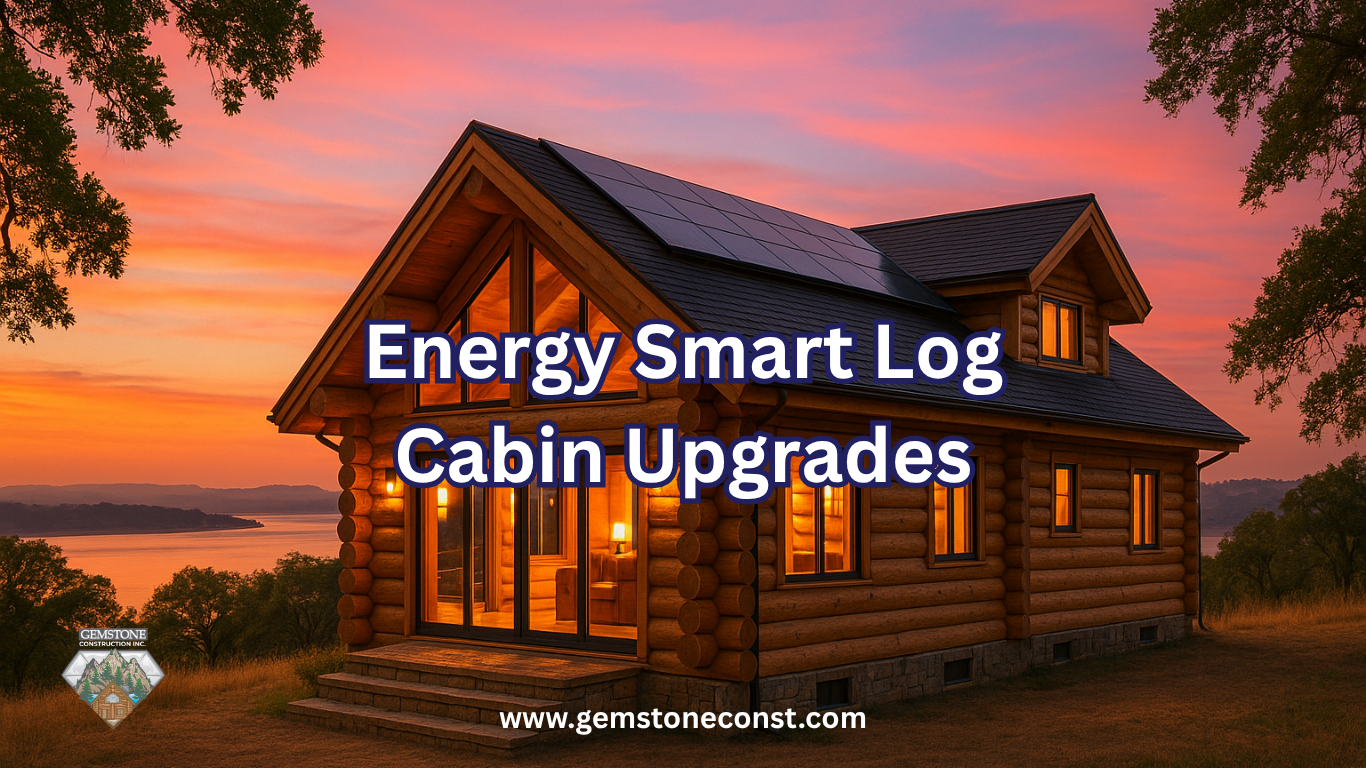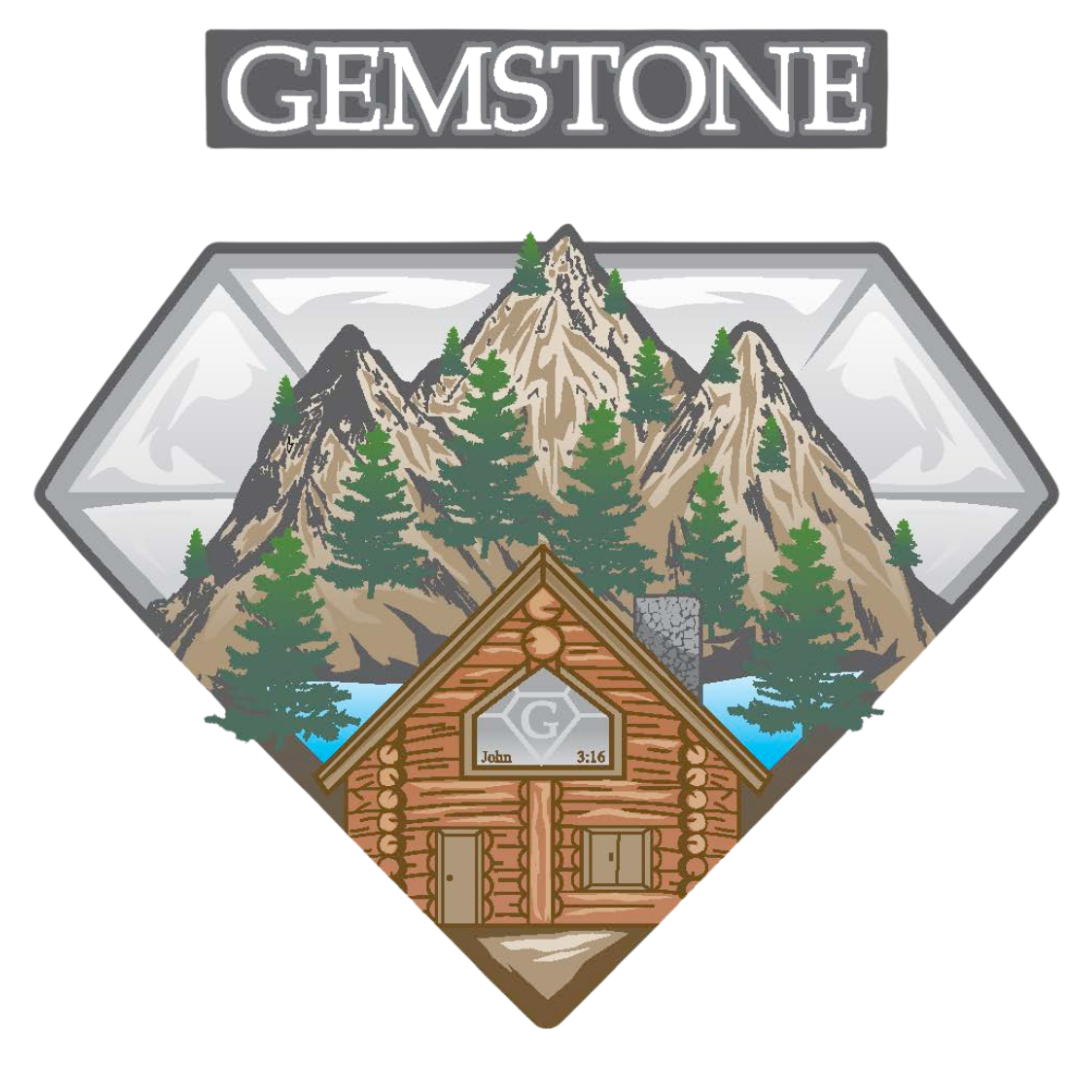GemStone Construction Blog
Keep the Heat, Cut the Bills: Energy Smart Upgrades for Sacramento Log Cabins
August 10, 2025 | Gemstone Construction | Sacramento, CA USA

Logs feel solid, but comfort and cash flow depend on what you cannot see. A single energy efficient log home upgrade makes a difference, yet stacking a few turns a cabin into a warm-in-winter, cool-in-summer money saver. Imagine sipping cocoa while January fog drifts through the Valley and the thermostat barely moves. Picture that same room in July, still comfortable while the afternoon sun bakes the neighbor’s stucco walls. Add a power bill that does not ruin taco night and you have the goal.
Our climate rewards smart layers. Mornings can start in the thirties, afternoons stroll into the seventies, and wildfire smoke may roll in without warning. A sealed shell, smart glass, right-sized equipment, fresh-air gear, and rooftop sunshine handle every twist. Each upgrade below is an add-on you can price, not sales fluff. Choose one, or bundle all five.
Upgrade the Shell and Stop Leaks Before They Start
Logs look massive, yet slivers between them steal heat faster than you expect. Gemstone Construction orders tongue and groove timbers cut on C N C machines, so edges lock tight like puzzle blocks. A foam gasket hides between every course. It stretches when August dryness shrinks the wood, closing gaps without a hammer swing. Crews finish with a flexible bead of chinking that bends through winter rain and summer sun instead of cracking. After roofing, a blower door fan proves the cabin breathes far less than Title Twenty-Four allows.
Insulation backs that seal. Dense-pack cellulose fills rafters and laughs at attic air that can top one hundred degrees. Closed cell foam clings to the underside of the subfloor, blocking chill that seeps from damp soil in January. Both layers hug log walls, unlike fluffy batts that sag and leave gaps. This shell package costs about eight dollars a square foot over builder basic, yet it lets you pick a smaller heat pump later and cuts winter bills roughly twenty percent. That saving arrives every month, year after year.
Careful design choices during planning clear the path. Service chases and attic vent spots are drawn before logs arrive, so crews install insulation with no last-minute drilling, no surprise cost adders, just a calm schedule.
Corners That Refuse to Leak
Wind sniffs out corners first. Carpenters tuck expanding tape into every notch before stacking. The tape balloons when timber shrinks, blocking Delta dust and backyard breezes. At dusk, a hand-held infrared camera shows leaks as bright streaks. A quick shot of foam turns the streaks blue, proving the fix. Owners love watching the hot spots vanish on the screen. Inspectors like evidence more than promises.
Color helps as much as tape. Light stains bounce Sacramento sunshine and drop south-wall temperature by nearly twenty degrees at two in the afternoon. Cooler walls shorten air-conditioner run time and allow a smaller compressor from day one. Darker tones soak warmth, perfect for shady meadow lots in Auburn or Meadow Vista. Choose the tone that matches your site. Wash and restain every five or six years and the shell keeps purring.
Upgrade Windows so Glass Pays the Bills
Glass can warm a room for free or chill it expensive. Triple pane low E windows filled with argon block close to seventy percent more heat flow than common double panes. Outside frames wear powder-coated aluminum that shrugs off ultraviolet rays, while interior faces show pine grain that matches logs. Placement finishes the magic. Big panes look south to drink winter sun, while narrow shaded panes face west so supper isn’t served in an oven.
Roof overhangs polish the plan. A brow two feet deep above south glass blocks high July sun yet welcomes low winter rays. Casement windows seal tighter than sliders because wind presses the sash into its gasket. They cost a little more, and that extra price flows back when the heat pump shrinks, smoothing the overall cost math without stealing comfort.
Solar Gain Without a Calculator
Think of a south window as a silent space heater. On a clear February day a three by five pane can pour almost four thousand British thermal units an hour into a living room. Swing that pane west and you risk roasting the couch at five o’clock in July. Builders mix high-gain coatings on shaded faces with lower-gain glass where sun is relentless. Owners raised on stick built payback stories often learn that quality glass earns back its premium in five winters because logs store daytime warmth for evening use.
Yard choices help. A valley oak west of a picture window blocks blazing light yet drops leaves to welcome winter sun. A grapevine arbor shades a breakfast nook all summer, then stands leafless after harvest. Small plants lock big savings and improve porch life.
Upgrade Heating and Cooling for Right-Size Comfort
Modern heat pumps pull warmth from forty-degree air with ease. Variable speed compressors ramp gently, holding indoor temperature steady instead of bouncing between blasts. Mini split heads in lofts tame rising warm pockets without bulky duct trunks. When ducts do run, they follow interior chases mapped in planning meetings, never the broiling attic, so conditioned air arrives with no energy loss on the journey.
Fresh air arrives through an energy recovery ventilator (ERV). The E R V trades stale room air for outdoor supply while sharing temperature and moisture between the two flows. Fans sip less power than a night-light yet keep carbon dioxide low during holiday gatherings. The intake pipe sits high above roofline to dodge dust. Filters slide out tool free, so owners actually change them.
E R V Benefits You Feel Right Away
Wildfire smoke sometimes seals windows for days. The E R V keeps air moving while a MERV thirteen filter catches smoke particles. In winter, outgoing warm air heats the cold supply inside the core. In summer, the opposite happens, saving power on cooling. Energy meters show fans costing pennies a day, while the main compressor rests more hours each month.
Savings rely on conduits placed during earlier lot prep work, when trenches were open and spare runs cost almost nothing. Future sensors now slide in with no drywall cuts, no visible wires, no stress.
Upgrade with Solar Power and a Battery
Sacramento enjoys more than two hundred sunny days yearly. A flush mount solar array around seven kilowatts paired with a ten kilowatt hour battery can cut electric bills by half and keep freezers cold during public-safety shutoffs. Rafters sized for panel loads go in during framing, so installers lag standoffs right into structure. Conduit hides in wall cavities before insulation, leaving no visible wiring on log faces.
Time-of-use billing turns the battery into a small utility. Panels charge at lunch when rates are low, then the battery feeds the house during the four to nine peak. Federal tax credits still cover thirty percent of cost. SMUD rebates often sweeten battery deals when funding is open. Punch array and battery size into the calculator link and the payback math pops up in minutes.
Money Paths That Make Solar Easy
Banks watch monthly cash flow. If panels cut two hundred dollars from future bills, lenders may approve a larger mortgage at the same payment. SMUD Green Home loans fold heat pump water heaters or smart thermostats into low interest notes. Buyers scrolling listings pause when they see “battery backup” because blackout memories are fresh. Lawrence Berkeley National Laboratory found that California homes with rooftop solar sold for an average price premium of about four percent.
That premium at resale plus lower bills now makes solar a two way win. Most owners watch the system pay for itself, then collect a little extra when they decide to sell.
Upgrade Maintenance Habits to Protect Every Dollar
Even the tightest shell needs love. Wash and restain logs every five seasons to block ultraviolet rays and close micro cracks. Light colors bounce summer heat; medium browns absorb winter warmth. Choose a tone that fits your site, then keep it fresh with a garden sprayer, soft brush, and a sunny Saturday.
Change HVAC filters every quarter. A fresh pleated insert restores airflow, eases blower strain, and saves energy right away. Clear gutters before winter so pine needles do not shade solar panels. Clean glass keeps kilowatt harvest at full strength, protecting the bill cuts you paid for on install day.
Raised Pads Add Quiet Savings
That extra foot of concrete stem wall set during site preparation blocks muddy splash and keeps crawl-space air cooler. Cooler floors take some load off the air conditioner and extend the life of floor stain. Insurers sometimes shave premiums for slabs that sit above minor flood zones. Small move, steady gain.
FAQ — Real Questions Homeowners Ask
Can a log cabin earn Energy Star?
Yes. Energy Star judges leakage, insulation, and equipment efficiency, not building style. A blower door score under three air changes per hour clears the shell rule for our zone. Dense cellulose in rafters and closed cell foam under floors meet insulation targets. An eighteen SEER heat pump covers mechanical needs. Certification runs about one thousand dollars, though SMUD often reimburses half. The blue label lifts resale because buyers trust third party proof more than marketing slogans.
How do log walls compare with structural panels for insulation?
Solid cedar walls measure near R thirteen. A six inch structural insulated panel reaches the mid twenties on the same scale. On paper, panels win. In practice, logs carry thermal mass that smooths indoor swings. A United States Forest Service study with matched test huts found mass walls trimmed heating demand fifteen percent in climates with large day night differences like ours. Many owners blend systems, choosing a panel roof for overhead R value and log walls for charm and steady temperature.
Does solar still pay when big oaks shade part of the roof
Micro inverters let each panel work alone. A shaded module no longer drags down the whole string. Trimming a limb or two, with a quick permit, often boosts annual output ten percent and slices a year off payback. A ground mount in a sunny meadow dodges shade completely and runs cooler, adding another bump to efficiency. Request a free site analysis during design and you will see real numbers before signing anything.
Great logs deserve great performance. Pop your cabin size, finish level, and preferred preferences into Gemstone Construction’s cost calculator, then call us to get started on a Sacramento log home that keeps comfort high and power bills low.
About Gemstone Construction
Gemstone Construction is a premier custom home and commercial building contractor serving Northern California, including the Sacramento area. Specializing in
custom log homes,
luxury home builds,
residential metal building construction, commercial construction and
commercial metal building construction. We bring craftsmanship, attention to detail, and personalized service to every project. From designing dream homes to building cutting-edge commercial spaces, our dedicated team ensures that each build reflects our clients' unique vision and exceeds expectations. Trust Gemstone Construction to transform your ideas into reality with integrity and excellence.
Learn more about Gemstone Construction

Contact Information


